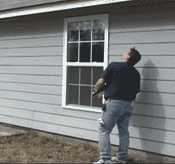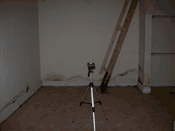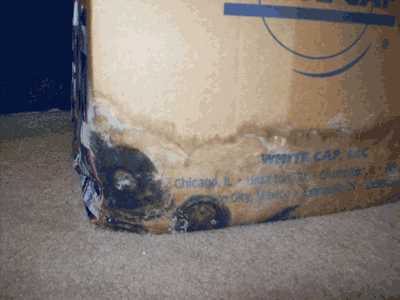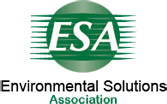Mold and Health Issues
Toxic mold causes severe health problems such as respiratory problems, asthma, flu like symptoms, headaches, chronic fatigue, nose bleeds, skin rashes and some pathogenic molds affect the central nervous system or suppress the immune system such as memory loss, Attention deficit disorder, and some cases brain damage in children and older adults.
Over half of the homes in the US have mold. Does yours?
How does mold cause health issues?
Exposure to molds occurs when people inhale mold spores. Mold spores are so small that they evade the protective mechanisms of the nose and upper respiratory tract. Although thousands of molds exist, only a few dozen are significant allergens. They aggravate or cause allergies and asthma, particularly, in children. The incidence of allergies and asthma has doubled in the last decade, which has been linked to the increase in air-borne molds in modern energy-efficient homes. One of five Americans suffers from allergies. The other common effects of exposure to molds include nasal stuffiness, eye irritation, wheezing, flu like symptoms, chronic sinus infections, rashes, nosebleeds, fever, shortness of breath, headaches, dizziness, inability to concentrate, fatigue, and respiratory infections. Some pathogenic molds effect the central nervous system or suppress the immune system.
Click here to read more about Mold Symptoms and Allergies
To schedule your inspection today, please call us
Office: (337) 786-4664
Be Safe – Get Your Home Inspected!
Don’t risk your family’s health. Get your home inspected by a professional, certified mold inspector today.
Call Russell D. Mayeaux or Dr. G. directly at (337) 786-4664 to set an appointment.
Before you rent or buy call The Mold Guy! (337) 786-4664
Before you pay high prices for Water and Mold damage
Call for an on site technical mold inspection which includes a full Thermal Imaging walk through.
Certified Mold Inspection
Mold Inspection can save you money from eliminating or reducing damage from mold. Mold can cause serious damage to your property and you may not even know it is happening. A certified mold inspector knows mold creates the most common indoor air quality complaint-from the smell of “mildew”
 Mold resting by a Certified Inspector may be warranted if you are experiencing any of the following:
Mold resting by a Certified Inspector may be warranted if you are experiencing any of the following:
- Is there musty smell in your building?
- Are there any visible signs of water damage?
- Has there ever been a leak in the roof or basement?
- Have there been plumbing leaks?
- Have you had a sink or sewer overflow?
Black Mold is one of the types of mold that is very toxic. This toxic mold fungus requires mold remediation.The most dangerous indoor molds are Alternaria, Aspergillus, Chaetomium, Cladosporium, Fusarium, Mucor, Penicillium, and Stachybotrys. Mold sampling and mold lab analysis are required to identify specific mold species.
Common Symptoms of Mold Exposure
The following are a list of some of the Mold Exposure Symptoms. You may have a mold issue if any of the residents of the building or home are experiencing adverse health effects such as:
- Nausea
- Sinus congestion
- Coughing
- Running Nose
- Sneezing
- Skin Rashes
- Flu Like Symptoms
- Headaches
- Restlessness
- Irritation of the eyes
 In addition to discovering the type and extent of a mold problem, a professional mold inspector will look for the source of your moisture intrusion. Moisture problems need to be identified and corrected as soon as possible because mold can start to grow within 24 to 48 hours after an intrusion. Since there are no guidelines or standards in the mold inspection and/or remediation industry, it is very important that you hire a mold professional to identify and correct any mold problems.
In addition to discovering the type and extent of a mold problem, a professional mold inspector will look for the source of your moisture intrusion. Moisture problems need to be identified and corrected as soon as possible because mold can start to grow within 24 to 48 hours after an intrusion. Since there are no guidelines or standards in the mold inspection and/or remediation industry, it is very important that you hire a mold professional to identify and correct any mold problems.
It is impossible to get rid of all mold spores indoors. Some mold spores will always be present in house dust and floating in the air.
Indoor mold growth can and should be prevented or controlled by controlling moisture indoors.The mold spores will not grow into mold colonies if there is insufficient moisture.If organic materials are wet for more than 24 hours mold will result.
The longer that mold grows, the more mold damage to the building.Mold grows by eating and destroying organic building materials and other cellulose-based materials such as carpeting, upholstery, and clothing.
 Cellulose is the main substance in the cell walls of plants (and thus of wood), and it is used in the manufacture of many organic building materials such as drywall, plasterboard, plywood substitutes, and ceiling tiles.
Cellulose is the main substance in the cell walls of plants (and thus of wood), and it is used in the manufacture of many organic building materials such as drywall, plasterboard, plywood substitutes, and ceiling tiles.
Mold can grow hidden and undetected inside wall and ceiling cavities; beneath wallpaper, paneling, and carpeting; and inside heating and cooling equipment and ducts, attics, crawl spaces, and basements.
Mold growth is often the result of a structural or construction defect, or of maintenance neglect, that allows moisture to enter the building, making a toxic mold building or toxic mold house.
Frequent causes of mold and where it grows best:
Basement flooding and water intrusion, or Closeness to a lake, river, or ocean
Clothes dryer exhausting into walls/attic
Condensation water problems
Construction defects/poor workmanship
Crawl space dirt and humidity
Dryer venting into walls or attic
Exhaust fans venting into walls or attic
Firewood indoors
Flooding
Lot grading downward to home
High indoor humidity [50 to 60% plus]
Humidifiers & vaporizers
Inadequate ventilation
Indoor plants
Overflow from tubs/showers/sinks/toilets
Landscaping like mulch & plant glut
Leaky roof
Venting lacking in kitchen/bathrooms
Sewage pipe leaks
Siding water leaks
Water supply pipe leaks







